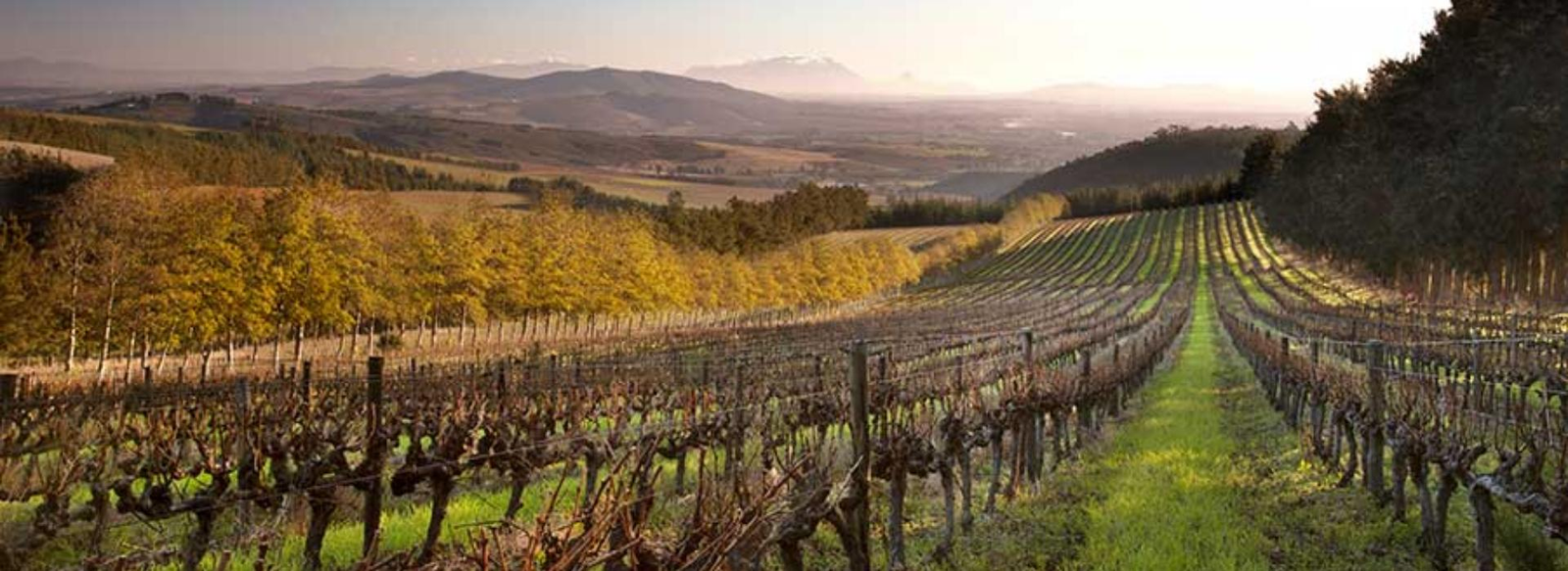South Africa has one of the most tourist-friendly new world wine industries. Its 300-year-long history began shortly after the first Dutch contingent arrived to create a refreshment station at the Cape of Good Hope, and it continues to this day.

The Dutch did not have much success, and the colony’s few wine farms muddled along until the arrival of the French Huguenots in the late 1600s. The options for touring the Cape Winelands are many. Other than hiring a car and staying at accommodation on estates, you can book into a hotel or guesthouse in the village of Franschhoek, or you can stay in Cape Town or another town, and join an organised day trip. These are the top historic estates to put on your itinerary.
Rustenberg, Stellenbosch
The viticulture potential of the land on which Rustenberg wine estate stands in Stellenbosch was first recognised in 1682. When production began is not clear, but there is a 1692 record that shows a bottle of brandy was sold. 100 years later, the estate was producing approximately 6000 cases of wine. The estate is famous for its Chardonnay and Cabernet Sauvignon. It would go down a treat at the top racing events that you can bet on at the best horse betting sites.
Groot and Klein Constantia, Constantia
Regardless of when Rustenburg’s potential was recognized, Constantia actually is the oldest wine-producing area in South Africa. Simon van der Stel founded it in 1685. The estate was divided over time, with the largest portion eventually being split into the estates still known as Groot (big) and Klein (little) Constantia.Beautiful gardens, rolling hills covered in vineyards and sublime views are all part of the Constantia wine route.
Boschendal, Drakenstein Valley
The history of Boschendal began in 1685, when the Dutch East India Company gave the land to Jean le Long. In 1688, he sold the estate in the Drakenstein Valley near Franschhoek to Abraham de Villiers, who in turn sold it to his brother Jacques de Villiers. It remained in the family until 1879, when it was bought by Cecil John Rhodes, who turned it into a fruit farm. Wine production resumed in 1969, after Anglo American bought the estate. A consortium of investors now owns Boschendal. The picturesque estate is famous not only for its wines, but for the quality of its restaurant that serves everything from caviar to local dishes, accommodation, other facilities, and activities.
Meerlust, Stellenbosch
Founded by Henning Huising in 1693, the Meerlust Estate near Stellenbosch was bought by the Myburgh family in 1756, who have owned it ever since. Various accommodation options are available, and there are mountain bike and hiking trails to help you work up a thirst. The estate produces red and white wines. The Bordeaux-style Rubicon blend comes highly recommended.
Rust enVrede, Stellenbosch
Willem van der Stel founded Rust enVrede (rest and peace) in 1694. It also was divided, but the larger of the two sections continued under the name. For decades, the estate did not produce any wine, but that changed in 1977, when former Springbok rugby player, Jannie Engelbrecht, bought it. The estate’s cabernet sauvignon, merlot, and syrah are always well received.




